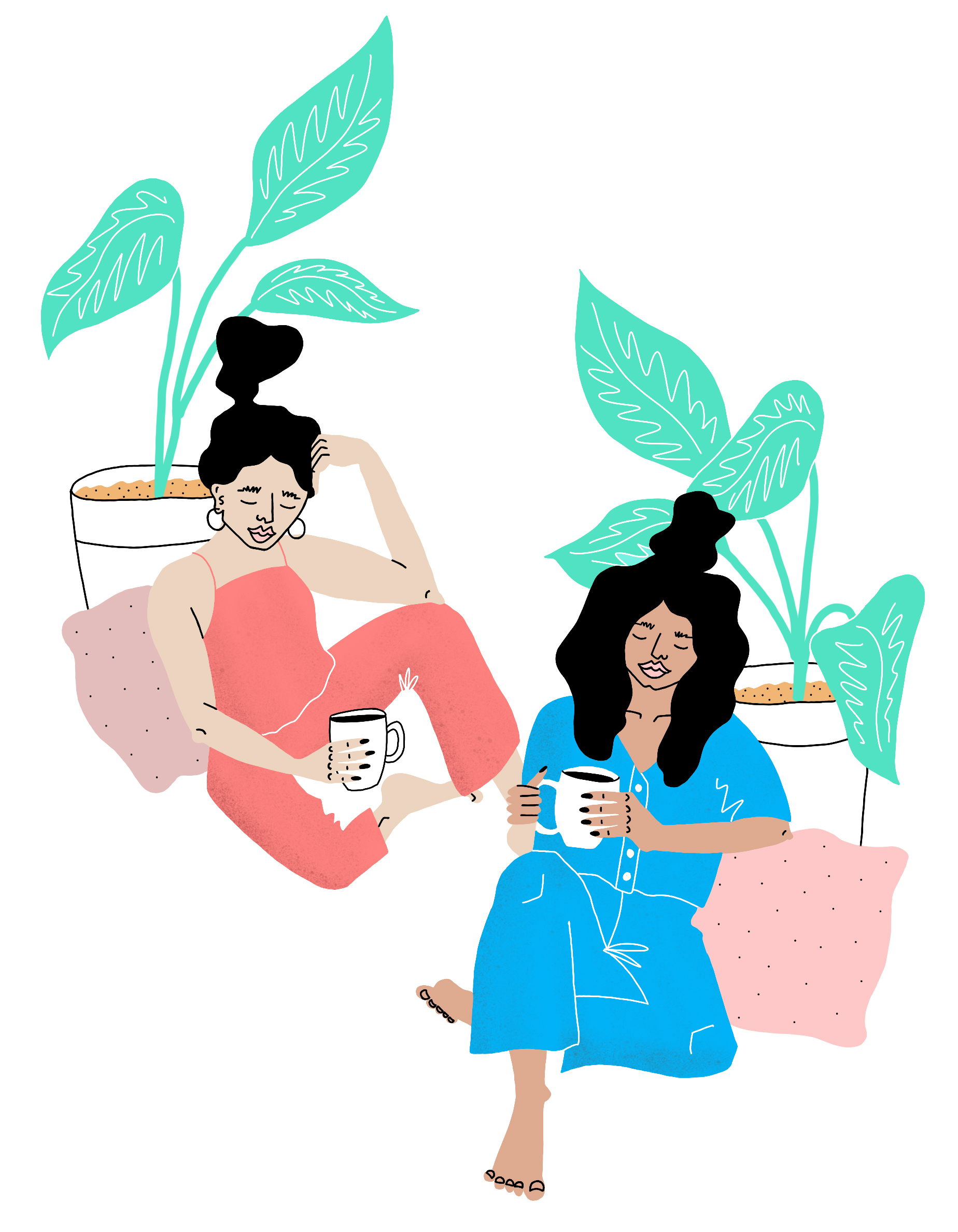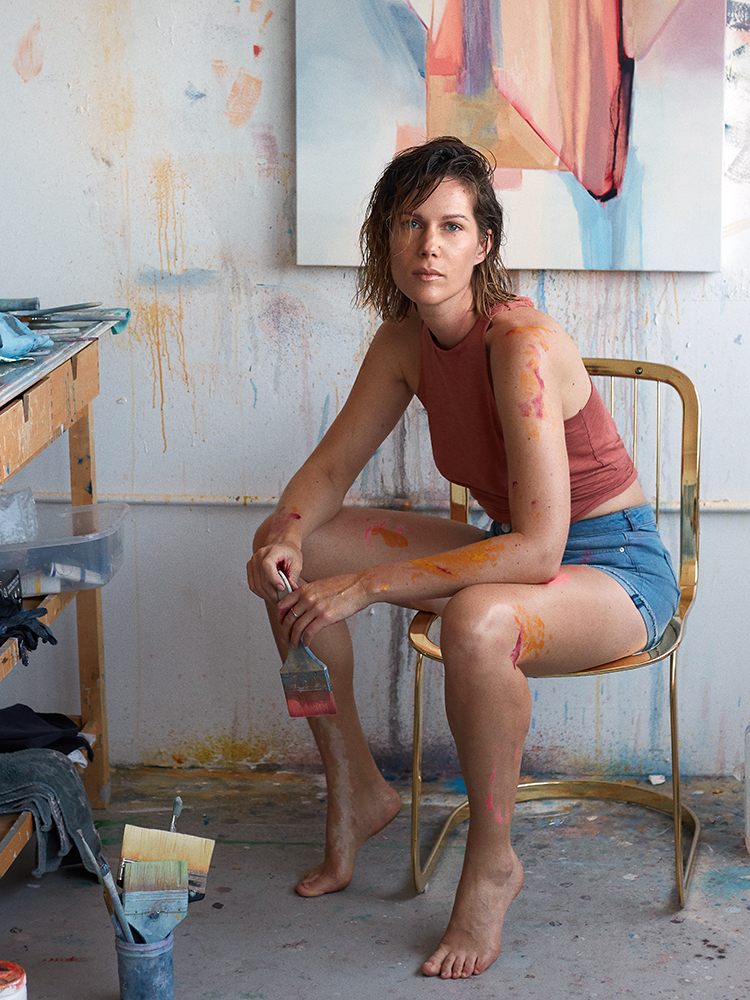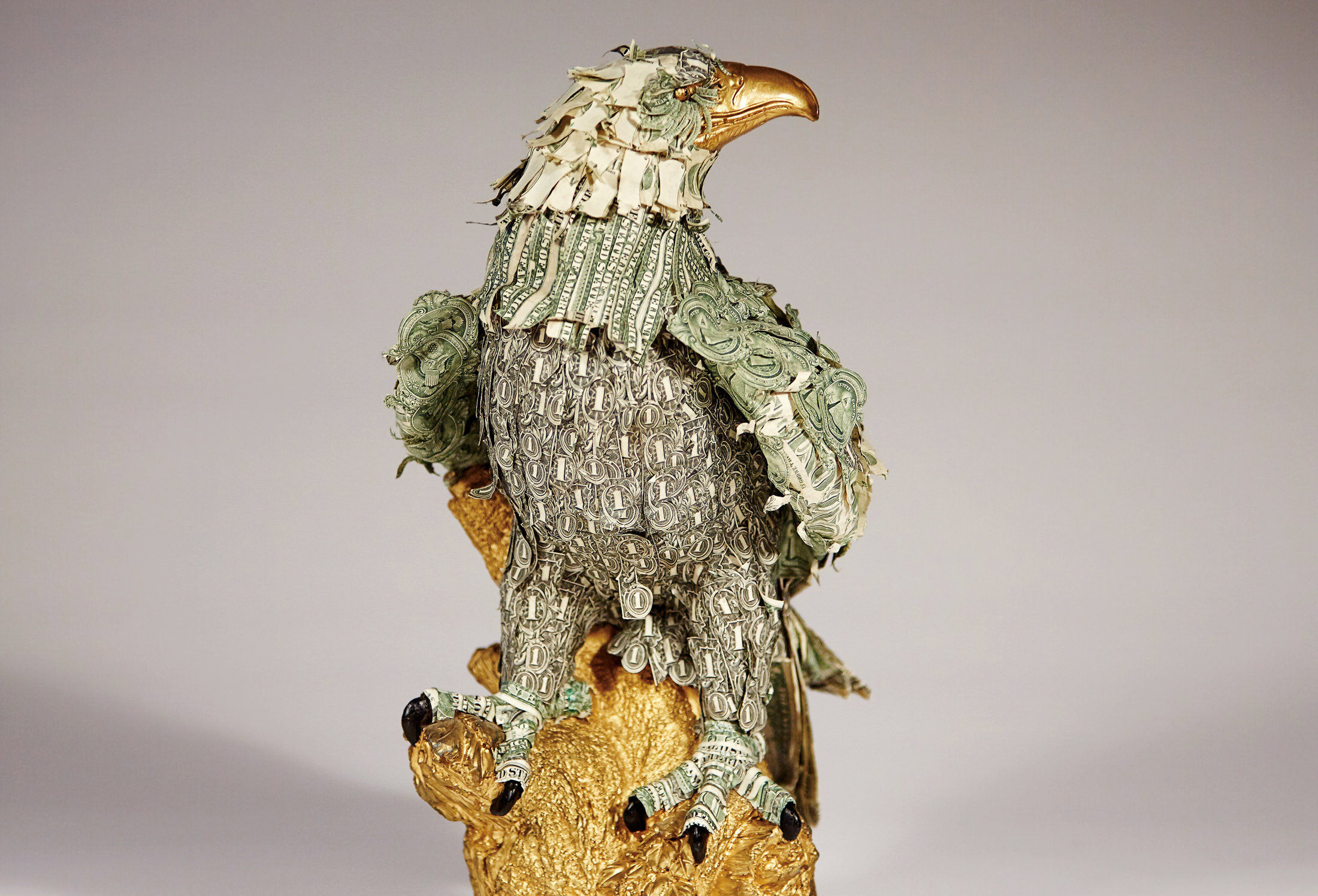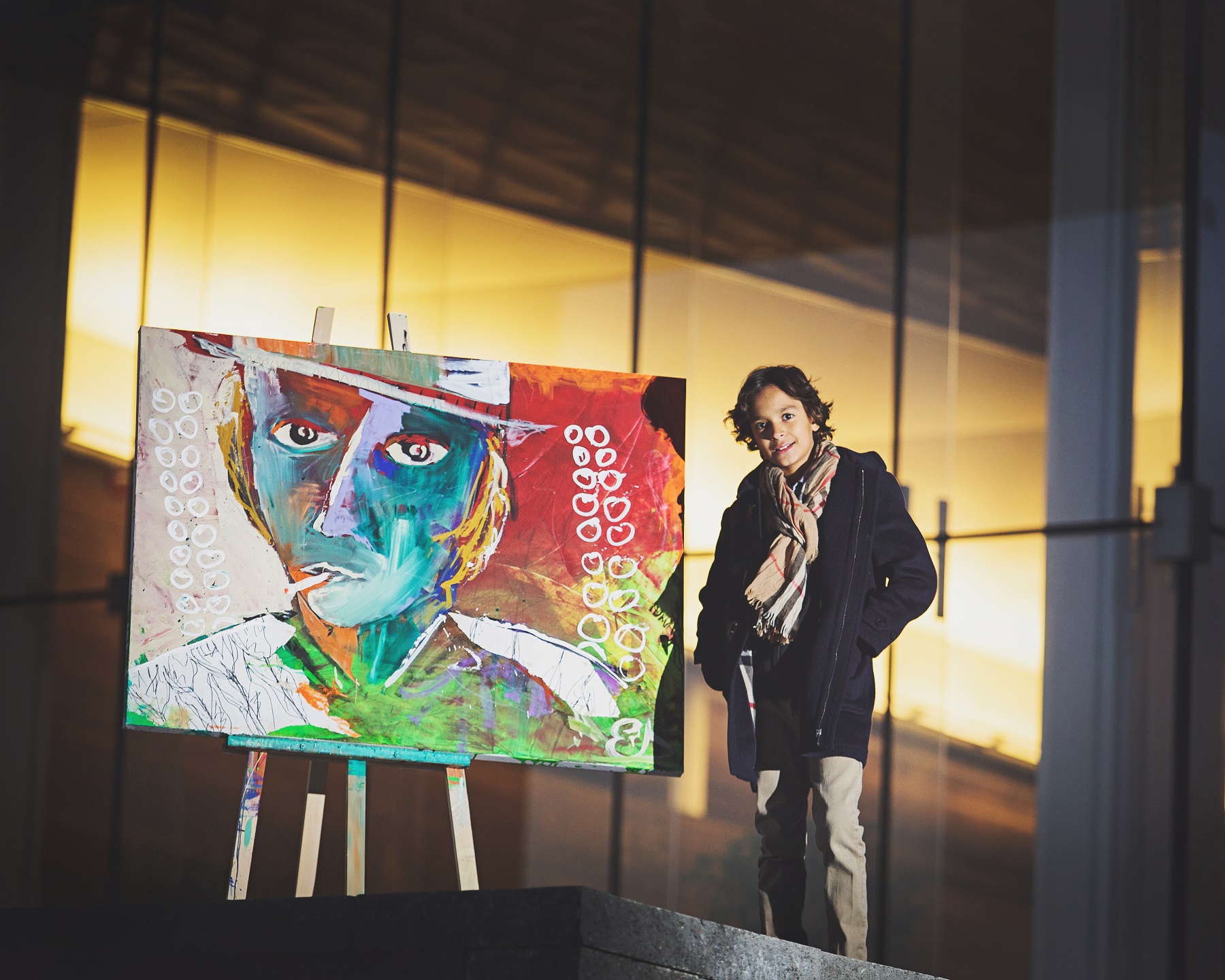Canadian Artist Zoë Pawlak’s Body of Work
Making it.
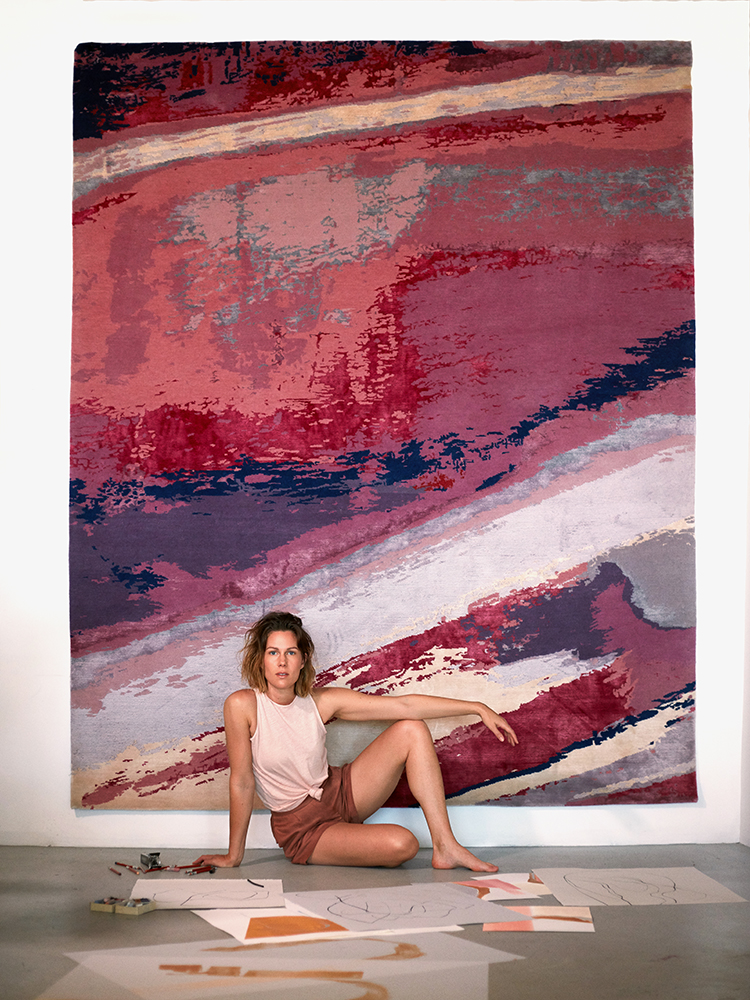
In 2007, when Canadian artist and designer Zoë Pawlak was starting out, she was 24, working in a restaurant, pregnant, and reading business mogul Seth Godin’s books. “My story is very much connected to the fact that I was a waitress and then I got pregnant,” she says sitting in a sun-drenched coworking space near her Vancouver studio. “What was I going to do—go back to waitressing, or make a go of a business?”
Now an internationally recognized artist, it’s hard to imagine that when she attended Concordia and the Nova Scotia College of Art and Design, Pawlak’s work was often referred to as too “consumable” or “fashion” by her professors. She identified somewhat with the other students but couldn’t fully relate to their introverted, melancholy attitudes. “I would always be pushed in art school to make my shit look weirder,” she jokes. Her suggestive, abstract mirrors, brightly coloured rugs and paintings reflect her positive energy.
After her first child was born, determined to make a go of her career, Pawlak submitted her work to 124 different design blogs before it was featured on Design Sponge. Suddenly, a whole world opened up for her, and the Internet was the door. She sold 23 paintings in three days, and her home began looking like a FedEx office. She had found a way to sell directly to art consumers outside of the gallery system, where there was little opportunity. “I based my business off of custom work and customer service,” she explains. “I figured out if I could give people those two things, they would acquire the thing they were looking to have in their home, and I could create a business that allowed me to be with people and hang out with them.”
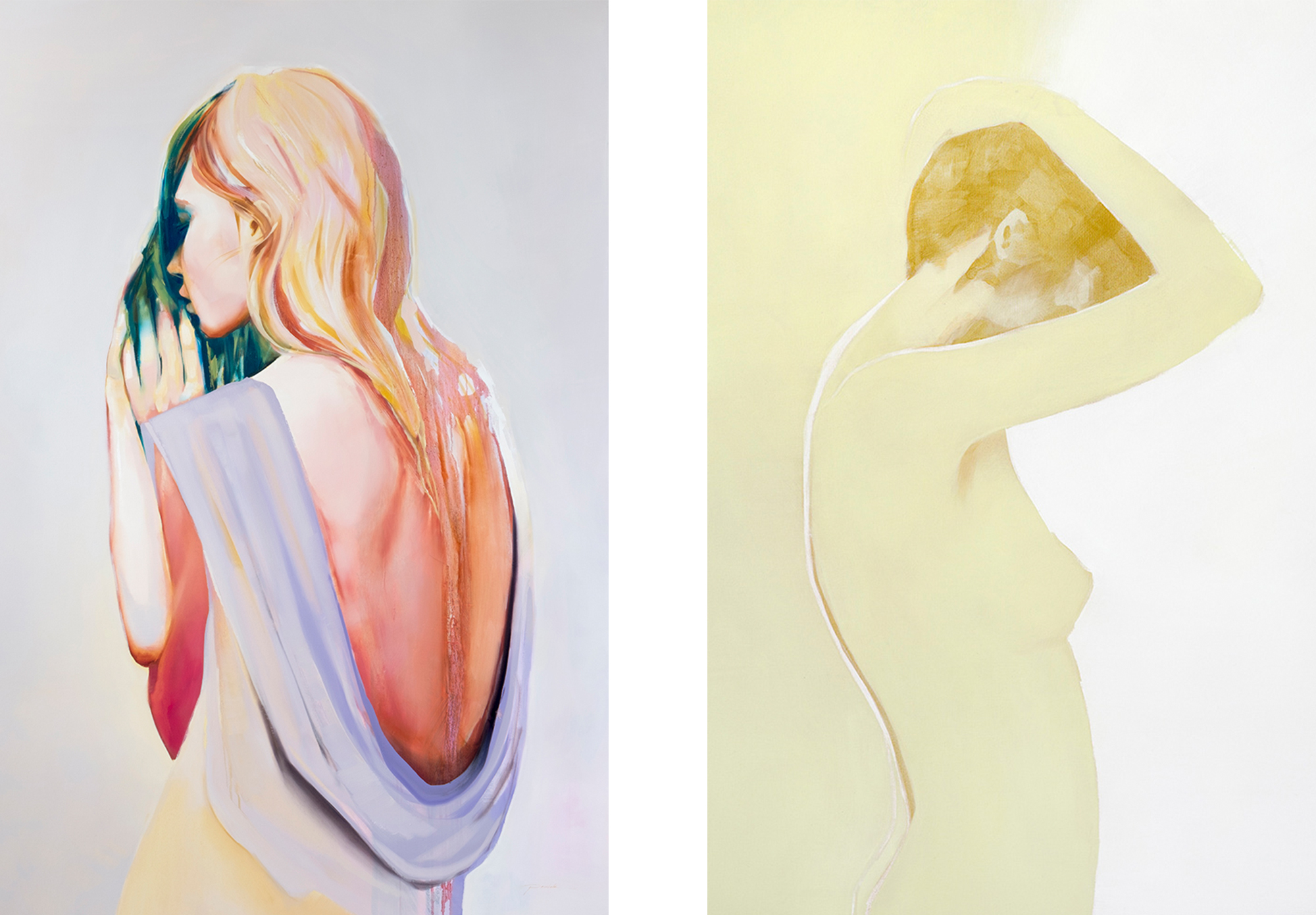
Paintings by Pawlak, More Left to Say (left) and The Weight (right).
Pawlak delivered her paintings to people’s houses, and she and her husband would host dinners for clients at their home. They would make a big pot of spaghetti, clients would BYOB, and relationships would form. “I was just trying to stay alive. From month to month for years. But I was also just doing what felt natural to me. We were always trying to find ways to be social and integrate that into a career.”
Even when struggling to make ends meet, Pawlak had no time for the starving artist stereotype. “I was always interested in making a living and being an artist—you know, like being a hybrid of that sort of artist entrepreneur.”
In art school circles, the paths to financial success that people teach are shrouded in mystery and largely unattainable, says Pawlak. The separation between creativity and money is a myth, one that the Internet is helping to break down through Instagram, YouTube, and blogs. “I hope that the myth is falling apart in front of everyone’s eyes,” she says. “We are reclaiming that capacity to make a living.”
People may look at Pawlak’s story and see a hustler, but she prefers to think of herself as a retired hustler. An admitted workaholic, Pawlak’s life at one point had a frantic energy as she struggled as a mother of two, trying to find success in the art world. “Anytime I say to my husband, ‘I think I would be further ahead if I didn’t have children,’ my husband says, ‘You have no idea. You have pushed so hard because you had children.’”
All of that hustling took a toll on Pawlak, however, and her drinking turned from habit into dependency, a symptom of a bigger anxiety. “It was a life raft that carried me through difficult times,” she confides. Be it marital issues or financial hardship, “you can sit on the deck and have half a bottle of white [wine] and just bury yourself.”
Two and a half years ago, she decided to quit. “It’s given me a new sense of clarity and focus in the studio and the rest of my life,” she says. “I have very little fear [now].”
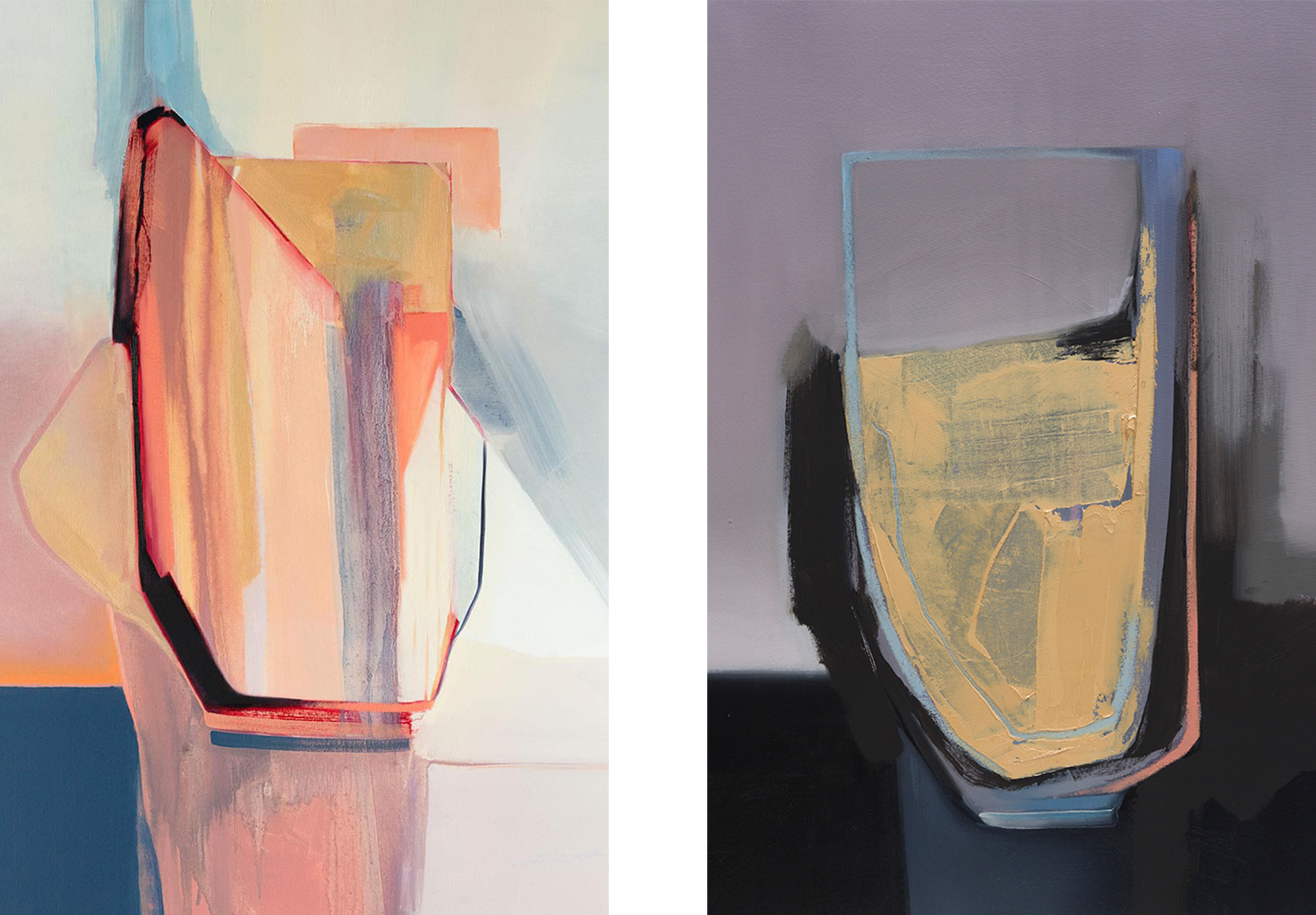
Water Pitcher I (left) and Gold Vessel (right) from Pawlak’s vessel paintings series.
When Pawlak got sober, she started asking herself questions, undergoing a rigorous self-exploration and healing from the inside out (not for the faint of heart, she cautions) that trickled into her latest art series. Large swaths of pastel pinks, purples, greens, yellows, and blues make up the shapes of the vessels depicted in her most recent 24-painting series, which she began last June. The artworks arose as a reaction to the three-dimensional vessels some of her male colleagues were producing for the 2018 International Contemporary Furniture Fair in New York, and as a way to actualize the experiences she was having as her body healed from the effects of alcohol dependency. “Seeing what my colleagues were making, I used it as a fire and inspiration to see what I could come up with in my mother tongue, painting.”
Pawlak describes her art as a spiritual practice. “It’s all in the work,” she says, “that je ne sais quoi, that feeling of effervescence. It’s the same with sobriety. If you go to AA, you have to believe in a power outside of yourself.” Since finding sobriety, Pawlak has lived her life in pursuit of an unshakable sense of peace and calm. “A lot of what we are doing with our time, effort, energy, and money is actually false if we admit that we are actually in pursuit of peace,” she notes. Pawlak captures that peace in the vessels in her paintings and holds that space for us.
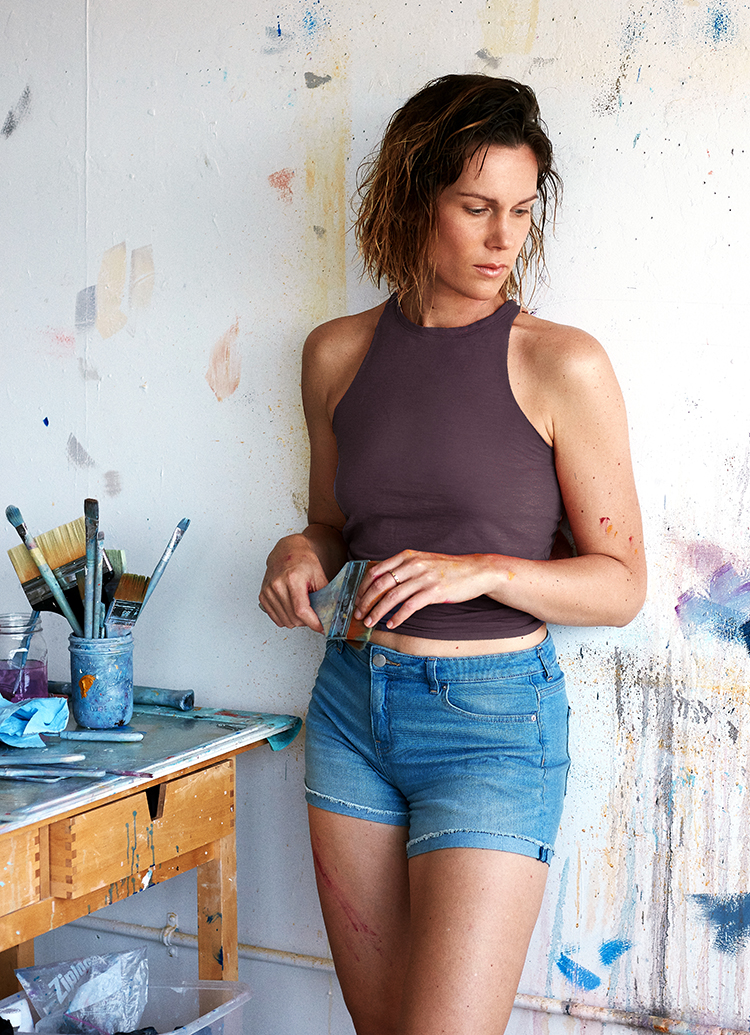
Pawlak’s work graces the personal collections of famous Canadians such as Cobie Smulders and Trevor Linden.
_________
Never miss a story. Sign up for NUVO’s weekly newsletter, here.





